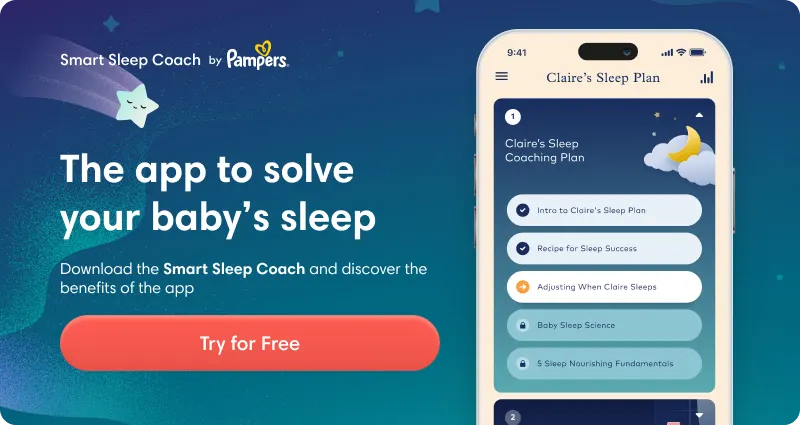Why Wake Windows Are More Important Than the Clock
Understanding Wake Windows
If you’re a parent of a young baby, you may have heard of “wake windows.” If you haven’t heard of wake windows or want to learn more about their importance for your baby’s sleep, this article is for you.
What is a Wake Window?
A wake window is the period of time in which your baby or toddler is awake between sleep periods. The end of a wake window is when your baby will be ready to sleep again. Wake windows change as your baby gets older and their sleep needs evolve.
Why are Wake Windows Important?
Following your baby’s wake windows is crucial for maintaining a healthy sleep schedule and preventing overtiredness or under-tiredness. Putting your baby to sleep past their wake window can cause them to release hormones that confuse their body and keep them awake. Conversely, putting them to sleep before their wake window ends may lead to sleep resistance. Wake windows adapt to your baby’s changing sleep needs and patterns, making apps like the Smart Sleep Coach by Pampers™ essential for adjusting wake windows as your baby grows.
What is the Difference Between Clock Time and Wake Windows?
Following the clock and following your baby’s wake windows are two different approaches to managing sleep schedules. Wake windows focus on the individual child's natural sleep cues, while clock times rely on fixed schedules. Wake windows are ideal for younger babies with varying sleep patterns, allowing for a flexible period of awake time based on sleep cues like yawning, rubbing eyes, or fussiness. This approach aligns with their natural rhythm, preventing overtiredness and promoting longer sleep stretches. Clock-based schedules offer structure and predictability, which can be effective for older children but may not suit the fluctuating sleep needs of younger babies.
Do Wake Windows Change as Babies Grow?
Yes, baby wake windows change as they age. For instance, newborn wake windows can be as short as 10 minutes, while a 6-month-old’s wake window may be closer to 2-3 hours. As your baby’s circadian rhythm matures around 3 to 4 months, they will begin to sleep more at night and have longer wake windows during the day. Hormonal changes and nap transitions also affect wake windows.
Wake Windows by Age
- Newborn: 10 minutes - 2 hours
- 1 Month: 45 minutes - 1 hour 15 minutes
- 2 Months: 45 minutes - 1 hour 45 minutes
- 3 Months: 1 hour 15 minutes - 2 hours
- 4 Months: 1.5 - 2 hours
- 5 Months: 1.5 - 3 hours
- 6 Months: 2-3 hours
- 7 Months: 2 hours 15 minutes - 3 hours 30 minutes
- 8 Months: 2 hours 45 minutes - 3 hours
- 9 Months: 2 hours 45 minutes - 3 hours 30 minutes
- 10 Months: 3 - 4 hours
- 11 Months: 3 hours - 3 hours 45 minutes
- 12 Months: 3 hours 15 minutes - 4 hours
- 13 Months: 3 hours 15 minutes - 4 hours
- 14 Months: 5 hours if on one nap or 3 hours 15 minutes - 3 hours 45 minutes if two naps
- 15 Months: 5 hours - 5 hours 30 minutes if on one nap or 3 hours 15 minutes - 3 hours 45 minutes if two naps
- 16 Months: 5 hours - 5 hours 30 minutes if on one nap or 3 hours 45 minutes - 4 hours if two naps
- 17 Months: 4 hours - 5 hours 30 minutes
- 18 Months: 5 hours - 30 minutes
- 19 Months: 5 hours - 5 hours 45 minutes
- 20 Months: 5 hours - 5 hours 45 minutes
- 21 Months: 5 hours 15 minutes - 5 hours 45 minutes
- 22 Months: 5 hours 15 minutes - 5 hours 45 minutes
- 23 Months: 5 hours 15 minutes - 5 hours 45 minutes
- 24 Months: 5 hours 30 minutes - 6 hours
What to Expect if Baby Stays Up Past Wake Window
If your baby stays up past their wake window, they may become overtired. This occurs because staying awake too long can cause their body to release cortisol and serotonin, hormones that wake them up. This state can disrupt their sleep schedule and make it harder for them to fall asleep. To keep your baby’s sleep schedule aligned with their wake windows, download the Smart Sleep Coach app. The app will notify you when a wake window is approaching so you can put your baby to bed at the optimal time.
FAQS AT A GLANCE
Wake windows are most helpful for younger babies still developing their circadian rhythm. As they enter toddlerhood, they may transition to a more structured schedule with one or two naps. This often happens around 18 months. Always follow your baby’s cues and adapt to their unique needs.
Conclusion
Although wake windows are tracked in hours and minutes, it's more crucial to observe your baby's signs of sleepiness rather than adhering to a specific time. This is because your baby's sleep needs change as they develop. For instance, your baby might feel sleepy at 6 pm one evening but closer to 5:45 pm the following night, and if you wait until 6 pm, you might miss the wake window, causing your baby to become overtired.
Monitoring sleepy signals is more effective—when you detect them, it's time to initiate the bedtime routine. Take this free sleep quiz to get a personalized plan in 3 minutes for perfecting wake windows and helping your baby sleep like a dream.

![[CA] WSD 1 - Baby World Sleep Day 1](https://images.ctfassets.net/2ql69mthp94m/41LJkNsvtsZMN716fbD3BQ/516c6979eb937cb9587b46106452ad17/WSD_-_Desktop_-_baby_sleeping.png?fm=webp&q=70)
